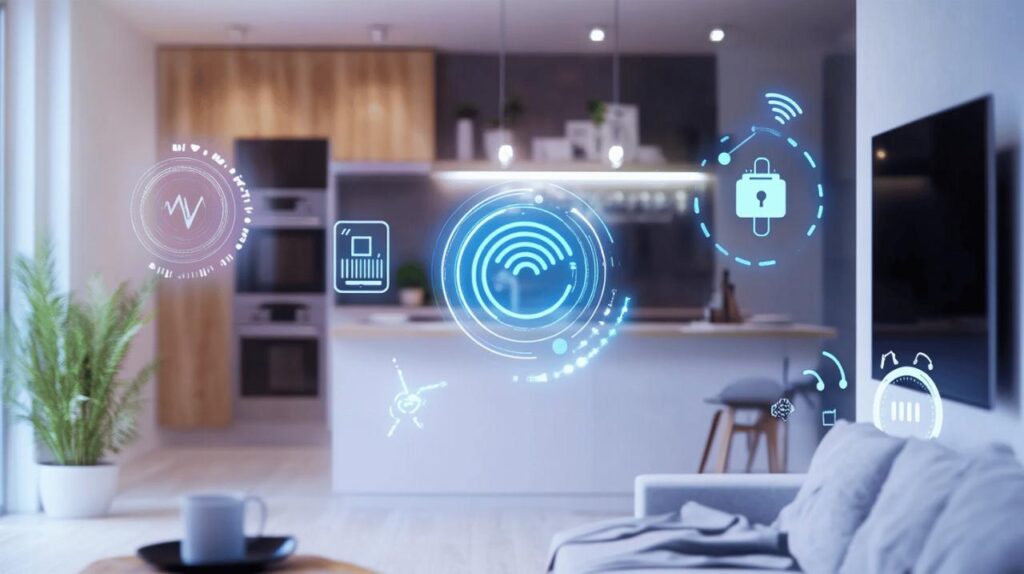Smart home technology has revolutionized the way we interact with our living spaces, offering unprecedented control, efficiency, and convenience at our fingertips. Modern homes are becoming increasingly intelligent, with devices that can communicate with each other to create seamless experiences tailored to our preferences and needs.
Creating an integrated smart home ecosystem
Building a truly intelligent home requires more than just collecting various smart gadgets—it demands thoughtful integration and strategic planning. A well-designed smart home ecosystem can transform daily routines, enhance security, and deliver significant energy savings while making life more comfortable.
Selecting compatible devices across brands
When building your smart home, device compatibility is crucial for seamless operation. Different manufacturers use various wireless protocols like Zigbee, Z-wave, Thread, Bluetooth, and Wi-Fi for communication. The emergence of Matter as a unified standard is making cross-brand integration easier, but research remains essential. Starting with foundational devices like smart thermostats can yield immediate benefits through zonal heating control and energy monitoring. Many homeowners find their Monkey Garden lighting projects benefit tremendously from smart bulbs that offer customized scenes while reducing power consumption.
Setting up central control hubs for streamlined management
A central hub serves as the command center for your smart home, eliminating the hassle of juggling multiple apps. Cloud-based options like Amazon's Alexa, Google Home, and Apple Home provide convenient remote access, while local hubs such as Fibaro Home Centre and Home Assistant offer enhanced privacy, reliability, and reduced Wi-Fi strain. These hubs enable you to create powerful routines where multiple devices respond to a single command. A robust mesh Wi-Fi network forms the backbone of any reliable smart home system, ensuring consistent connectivity throughout your living space.
Energy-efficient smart solutions
Creating an energy-efficient smart home has become increasingly accessible regardless of your property's age. Modern smart technologies offer significant benefits by reducing consumption while enhancing comfort and convenience. Starting with simple devices like smart thermostats and lighting systems can transform how your home uses energy, leading to substantial cost savings and a reduced carbon footprint.
Smart thermostats and lighting systems that reduce consumption
Smart thermostats represent one of the most impactful investments for home energy efficiency. These devices intelligently manage heating and hot water usage by learning your preferences and optimizing temperature settings throughout the day. The zonal heating control feature allows you to heat only occupied rooms, eliminating wasted energy in unused spaces. According to expert Victor Alonso from The Real Smart Home, customers using smart thermostats with specialized energy tariffs like Octopus Agile can achieve remarkable savings between 30% and 50% on their electricity bills.
Smart lighting systems similarly offer substantial energy benefits while providing enhanced functionality. These systems allow you to create customized light scenes tailored to different activities and times of day. By automating your lighting to respond to occupancy or time of day, you can eliminate lights being left on unnecessarily. Many smart bulbs use LED technology, consuming significantly less electricity than traditional bulbs while supporting your body's natural biorhythm through adjustable color temperatures. When integrated with motion sensors or geofencing, these systems can automatically turn off lights when rooms are empty, further reducing unnecessary consumption.
Monitoring tools to track and optimize energy usage
Taking control of your home's energy consumption starts with understanding it. Smart energy monitoring tools provide real-time insights into your usage patterns, highlighting which devices or systems consume the most power. These monitoring solutions can integrate with your smart home hub—whether cloud-based options like Amazon's Alexa and Google Home or local alternatives such as Fibaro Home Centre and Home Assistant—to provide comprehensive energy management.
Smart plugs offer another layer of monitoring and control by transforming regular appliances into connected devices. They can track energy consumption of specific devices, automatically power down electronics when not in use, and integrate into broader home automation routines. When combined with smart home automations, these monitoring tools can trigger energy-saving responses based on various conditions—such as automatically adjusting thermostat settings when energy prices peak or when no one is home. For homes with multiple smart devices, establishing a robust mesh Wi-Fi network ensures reliable communication between all components of your energy management system, maintaining optimal performance across wireless protocols including Zigbee, Z-wave, Thread, and Matter.

